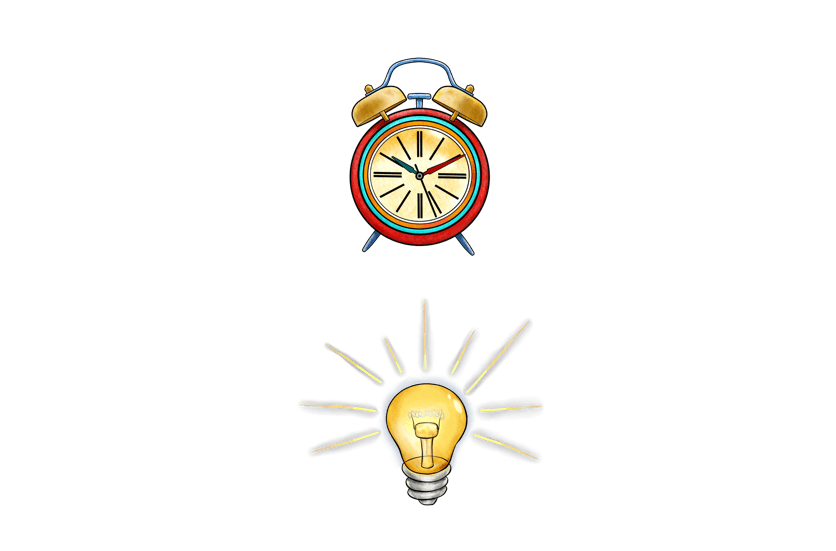
There's been a lot of talk about organisations having to move to remote work due to COVID. It seems to me that any organisation with staff in more than one office already has a remote workforce. Staff in different office locations in potentially different timezones communicating with each other.
So is the issue really about remote work? Or is it more about staff who would ordinarily work in an office, working remotely?
I think it's the latter, which opens up an interesting conversation.
Why aren't staff working remotely?
Let's flip the question. For organisations whose output doesn't rely on staff interacting face to face on a daily basis, then why aren't staff already working remotely?
Office space is expensive, especially when you consider utilisation rates (people actually using the office week to week) can be as low as 50%. Any other asset with a 50% utilisation rate would be reviewed as a number one priority! Commuting is time consuming, expensive and stressful. And everyone seems to do it within the same time window morning and afternoon. Which adds costs such as time, fuel and pollution. The technology exists to allow us to communicate with each other as if we were in the same room.
These seem like pretty solid upsides. So what are some downsides?
Some roles and functions may be difficult to perform remotely. Staff may feel isolated and not keep up regular social contact. Not everyone has a dedicated workspace at home or feels comfortable working from a cafe. While the promise of NBN is grand, in reality flaky internet speeds can make bandwidth hungry tasks such as online meetings challenging.
However I think many of these downsides are surface issues and underneath them are some fundamental concerns.
I think it's not about whether someone is remote working or not. Instead I think it's more about an organisations' attitude to their staff. Specifically a lack of trust from management. A belief that if someone isn't in the office then they're not working. That people can't be trusted to work productively when remote.
I've heard recently about organisations installing surveillance software on their people's laptops to ensure they continue working when they're not in the office. The software can take a screenshot of the laptop screen every 5 minutes.
As one of my mentors consistently tells me - your actions model your teams' behaviour. If you want your team to behave in a certain way, display that behaviour yourself. If the desired outcome is a productive and trusted workforce, isn't a strategy predicated on mistrust doomed to fail?
I believe at the core of this conversation around remote work are two foundational pillars; trust and communication.
Trust and communication
Humour me for a moment. Let's take where someone physically works out of the equation. Now what are the requirements for great work?
Trust
Trust is a core part of being human. We crave trust. Without it we can feel a lack of control and alone.
What does a lack of trust feel like?
- A lack of trust creates stress and anxiety.
- A lack of trust has us worried about self preservation and job security.
- A lack of trust makes us feel alone.
- A lack of trust weakens our resolve.
- A lack of trust hijacks our emotional energy and attention and focuses it on defending our work, status and role.
What does a lack of trust look like?
- A lack of trust makes an organisation fragile, since defeating a potential threat requires collaboration and potential sacrifice.
- A lack of trust encourages office politics.
- A lack of trust promotes an adversarial environment where people throw each other under the bus for personal gain.
In his book, Leadership is language, David Marquet talks to the damage that a coercive environment can do. That it can encourage the bare minimum since the assumption is you're not trusted to do your job without supervision. Responses such as "I was told to do it" and "I'm not paid to think" are common.
Okay, so it's clear that a lack of trust is to be avoided. So what does trust feel and look like?
What does trust feel like?
- Trust makes us feel supported.
- Trust makes us feel safe.
- Trust encourages us to collaborate.
- Trust encourages us to take risks and fail.
- Trust encourages us to be vulnerable.
Simon Sinek says that when we feel like we are part of a group and trust our colleagues, we naturally cooperate to face outside challenges. Exactly what's needed in these COVID times. Sinek believes that if we feel safe at work, we'll do great work. It's logical but as our modern working habits demonstrate, logical doesn't mean common or easy.
What does trust look like?
- Trust that people can work without needing constant supervision.
- Trust that people can produce great work from anywhere.
- Trust that if someone's "offline" it doesn't mean they're not working.
- Trust in sharing information and that people will do the right thing with information that's shared with them.
- Trust in people making their own decisions based on information and guidance available to them.
- Trust that if something doesn't get done, there's probably a valid reason why.
- Trust in teams by managers.
Communication
Communication is hard. We all do it every day but how often do we stop and think - How well am I communicating? Am I being heard? Am I communicating with context?
We're asking ourselves these questions at Yarno right now. In the past four years we've grown from two to thirteen people. How we communicate has grown organically during that time. We all work remote a few days each week, yet for the first time in the last few weeks we're all working fully remotely. And we're experiencing some challenges!
I plan to share our experience and approach in a separate post, so at a top level our core problems are:
- Lack of documented processes or expectations outlined on which tool/channel we use to communicate with each other.
- Lack of context being communicated requires additional time to be spent on conversations to keep everyone on the same page.
What's interesting to me is that these problems have been in the background for a while, yet have come to the fore in the past few weeks with the team working fully remote.
From a recent Know Your Team survey, how people communicate with each other on their team is the biggest difference between managing remotely versus in-person. And also the most difficult aspect to get right.
So what can you do to build trust and encourage better communication?
How do you build trust?
As leaders we can ask questions. Leadership coach Michael Bungray Stainer suggests leaders stay curious and enquire before judging. Asking your teams questions like:
- How can I help?
- What's a challenge you're facing?
- What have you tried already?
- What's working well?
- What's not working?
- What would you do if you were in my position?
- What's the real challenge here for you?
- What could I do more of?
- What could I do less of?
For approaches and questions to ask I like the books The Coaching Habit and The Book of Beautiful Questions (specifically the chapter on Leadership). The Know Your Team website has a bunch of free guides with hundreds of questions you can ask. I'm also a firm believer in trusting people to do the right thing. That they'll do what say they'll do. I think placing trust in someone early communicates that I believe they can do the right thing and I hope it motivates them to do their best work. It’s how I would want to be treated.
How can you improve communication?
I think now's the time to ask ourselves how we want to communicate with each other. Why should where someone physically is in the world significantly impact their frequency and quality of communication?
We need to understand what is and isn't working. Where are people talking past each other and creating frustration on both sides. Which tasks and projects are consistently being delivered late, over budget or with the scope blown out.
We can default to over-communication. To write with the assumption that the reader knows nothing about the topic. To assume that if you don't explicitly communicate something, your team has no idea what you're thinking. Ideally any document you write can stand on its own and not require additional explaining. If that sounds like a lot of work, you're right!
Wrap up
COVID-19 was the catalyst for a monumental changing of the status quo. For me this was scary, especially in those first few weeks when the situation seemed to get worse by the day. Yet throughout this period we spoke about the importance of a crisis mindset, one that believed we could get through it. And to see the challenges we faced as opportunities. We kept saying this to ourselves even if we didn't fully believe it at the outset.
It's this mindset that encourages me to keep pushing to look inward and ask how can we be better. Looking through that lens, now's a perfect time to talk about what is and isn't working and start collaborating on a path forward. If we can maintain a healthy culture based on trust and communicate effectively when we're forced to work remotely, then we're creating resilience for the future.
Do you see trust as more important than technology in a remote work environment?





































